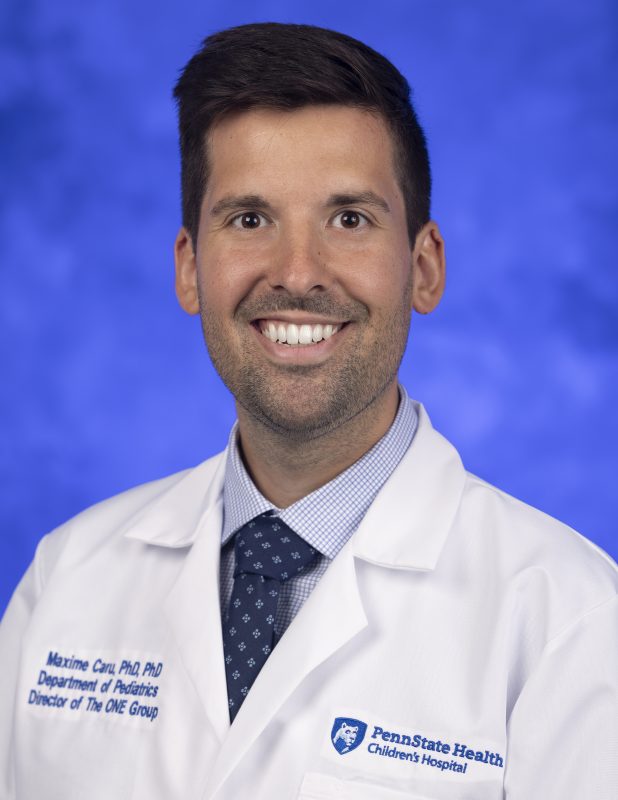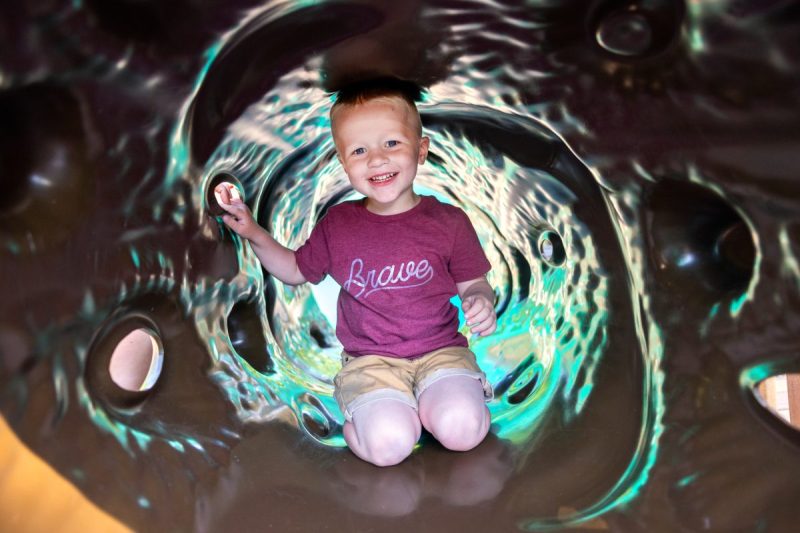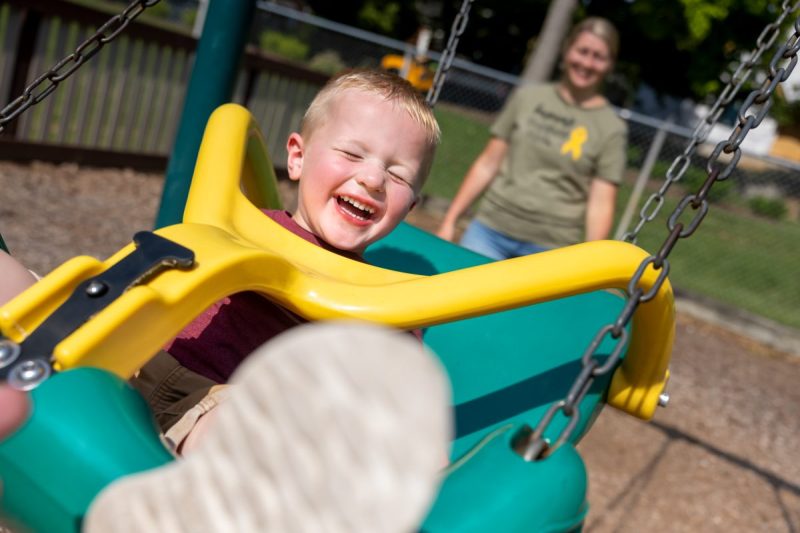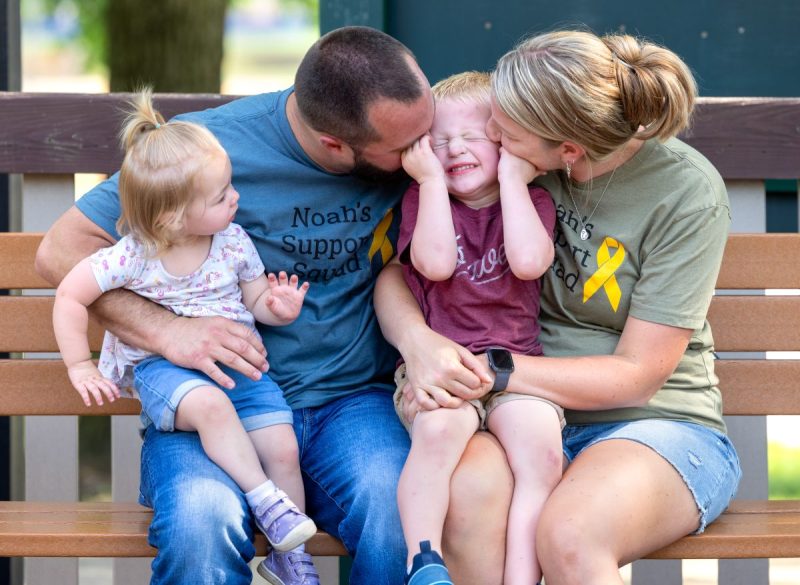At first glance, movement might seem counterintuitive for children facing cancer. Treatment is exhausting. Fatigue is constant. Activity may feel out of reach. But for Dr. Maxime Caru, a leading pediatric oncology researcher at Penn State College of Medicine, accompanying treatments with movement was exactly what was needed to heal—physically, emotionally and psychologically.
Through his work, supported by Four Diamonds, Caru is redefining what care looks like for young patients. His research-backed, hands-on approach puts kids in motion—and back in control.
From Lying in Bed to Being Active
Unlike traditional research roles confined to labs, Caru’s work happens right alongside patients.
“I wear a few hats—I’m a full-time researcher, research psychologist and exercise physiologist,” he said. “I meet with patients throughout their cancer journey, we talk about physical activity and their opportunities to be more active. It helps me design individualized physical activity programs tailored to their diagnosis, treatment stage and health status.”
The programs aren’t one-size-fits-all. They evolve weekly based on how each child feels—physically and emotionally—ensuring every plan is safe, responsive and empowering.
A Personal Story That Sparked a Passion

“I was a competitive cyclist in France, a member of the national team, but one day, I got hit in a hit-and-run accident while training,” he recalled. “During my recovery, I noticed similarities between my symptoms and those of pediatric cancer patients. When you are asked to rest, you often don’t move, which can lead to heart problems and mental health challenges. That’s when I saw the potential for physical activity to make a difference.”
Penn State became his home for this mission. And with the backing of Four Diamonds, he found the support system needed to turn this vision into reality.
Play Over Prescription
At the heart of Caru’s method is one belief: movement should feel like play for young patients.
“We don’t want it to feel like therapy—we want kids to want to do it and enjoy it,” he said. “The improvements in their physical and mental health are incredible. I have patients who were afraid to move, and with the right support, they became more active, keeping up with their friends and siblings.”
That shift is what makes this work so powerful. It’s not just about physical activity; it’s about restoring joy, confidence and control.
Healing Beyond the Physical
Encouraging kids to move more every day offers more than physical benefits. It reduces anxiety and depression, helps patients recover from treatments more efficiently and even boosts the immune system.
“Cancer-related fatigue doesn’t go away with sleep—it requires movement, which might seem contradictory at first,” Caru explained. “But encouraging young patients to engage in regular physical activity helps them improve their well-being and quality of life. Thanks to programs funded by Four Diamonds, patients are receiving the right support.”
These kids thrived. They gained strength. They started to believe in what was possible again.
Complementary Care, Not a Replacement
Caru is quick to clarify: physical activity isn’t a replacement for medical treatment—it’s a partner to it.
“Physical activity builds resilience in ways medicine can’t. It helps patients recover, regain stamina and live more fully,” he said. “The long-term payoff is autonomy, confidence and strength.”
His vision includes dedicated pediatric spaces for movement and integrating physical activity into medicine as a standard of care.
Why Four Diamonds Matters
This work is only possible because of generous support.
“To my knowledge, we’re one of the few children’s hospitals in the U.S. offering this kind of program—and that’s largely because of Four Diamonds,” Caru said. “They cover the cost of our physical activity program to empower young patients, which means 100 percent of Four Diamonds families can enroll.”
That access matters. Of the families offered participation in the physical activity programs, more than 90 percent enrolled, and 100 percent of those stayed. That success rate speaks volumes.
What’s Next: Expanding the Reach
In the next few months, the program will grow to include patients currently in active treatment—not just survivors. And that’s just the beginning.
“We’re looking to expand virtually too, so kids can access care from wherever they are,” Caru said. “Every fundraising effort and community advocate brings us closer to that goal.”
A Dream for the Future
“I want to see more kids moving. More doctors talking about it. More families seeing the possibilities beyond diagnosis,” he said. “The work we’re doing here gives us hope—for the kids, for the future of oncology and for conquering childhood cancer altogether.”



